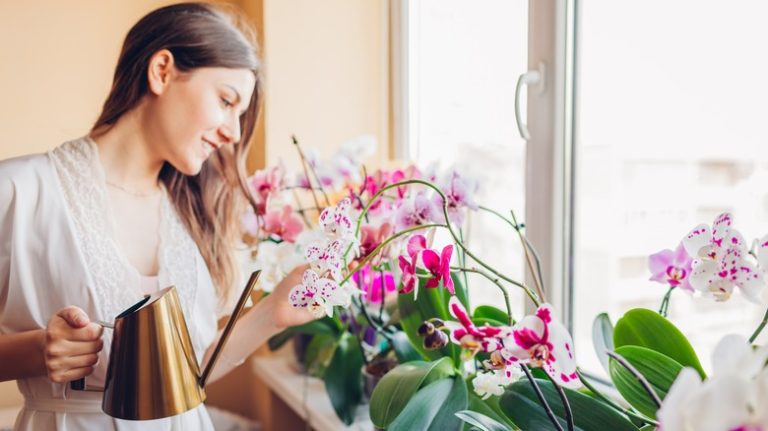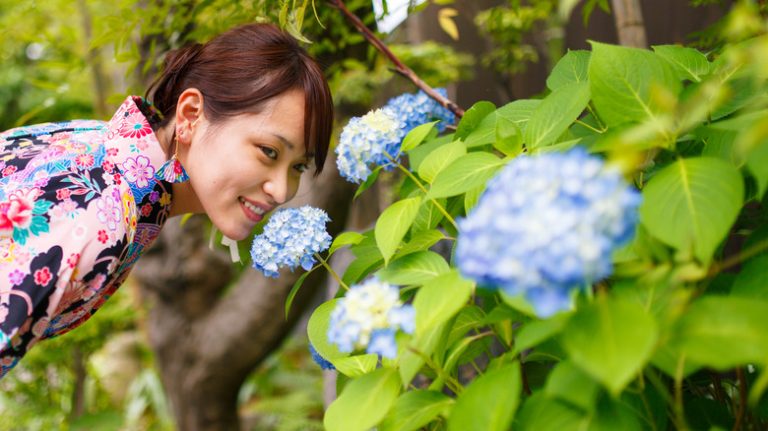When it comes to creating a beautiful and healthy garden, phlox is a plant that ticks all the boxes. With its requirements of minimal care, it is a natural choice for both experienced gardeners and newcomers alike.
Phlox paniculata, commonly known as tall phlox or garden phlox, is a perennial plant that comes in a wide range of colors, from vivid pinks to deep purples. Its beautiful flowers make it a popular choice for garden borders and beds.
One of the cons of phlox paniculata is that it needs a slightly cooler climate to thrive. It is best suited for hardiness zones 4 to 8, where it can withstand cold spells and overwintering temperatures.
However, phlox paniculata is not the only type of phlox available. Phlox subulata, also known as moss phlox or creeping phlox, is another excellent choice for gardeners in warmer zones. This low-growing perennial is more heat and humidity tolerant, making it a better option for areas with long, hot summers.
Regardless of the type of phlox you choose, there are a few common requirements to keep in mind. Phlox plants prefer fertile, well-draining soil and should be watered regularly, especially during dry spells. Applying a layer of mulch around the plants can help prevent weeds and retain moisture.
Phlox is susceptible to a few pests and diseases, including spider mites and powdery mildew. To keep your plants healthy and blooming, it’s important to monitor them for any signs of problems and take appropriate action, such as dividing overcrowded clumps or treating with organic pest control methods.
In conclusion, if you’re looking to add a splash of color and life to your garden, consider planting phlox. With its beautiful and fragrant flowers, minimal care requirements, and ability to attract butterflies and hummingbirds, it’s no wonder phlox is often called the “cocktail of the garden.” So, why wait? Bring some phlox into your garden and enjoy the beauty it brings!
“Phlox is one of the second perennials which will be likely to weaken the physical constitution of the garden.” – Franz Van der Pheyden
With its diverse range of colors, height, and spread, phlox can be used to create a garden paradise that is truly breathtaking. Whether you choose to plant them as a border, in mixed beds, or as a ground cover, phlox is sure to add a touch of perfection to your outdoor space.
All About Phlox
Phlox is a perennial plant that is a major favorite in gardens. It belongs to the Polemoniaceae family and is known for its vibrant and colorful blossoms. Phlox comes in various species, including Phlox sublata, Phlox paniculata, and Phlox stolonifera. Each species has its own unique characteristics and growing requirements.
Phlox is frequently grown in garden beds and containers, as well as in woodland and ridge gardens. It thrives in well-draining soils that are rich in organic matter. The plants prefer moist conditions, but they can tolerate some drought once established.
One of the major pros of growing phlox is its long blooming period. Depending on the species and cultivars, phlox can produce flowers throughout the summer months, adding color to the garden. The flowers are typically arranged in billowy panicles and come in various colors, including pink, purple, white, and yellow. The most popular cultivars include ‘Sherbet’ and ‘David’.
To keep phlox plants healthy and blooming, it is important to supply them with sufficient fertilizer. A granular or liquid fertilizer can be applied in early spring and again in midsummer. This will provide the necessary nutrients for the plants to thrive. Phlox plants should also be regularly watered, especially during dry periods.
Overwintering phlox can be challenging, especially in colder climates. Mulch can be applied around the base of the plants to protect them from frost and to conserve moisture. In some cases, phlox plants can be potted and brought indoors for the winter months.
Phlox plants can be propagated through division. This can be done in early spring or early fall by dividing the clumps into smaller sections. This helps to rejuvenate the plants and promote better growth. Dividing phlox plants every few years is recommended to maintain their vigor.
Phlox plants are native to many regions, including North America and parts of Europe. They are a great addition to any garden, adding beauty and fragrance. Phlox is a versatile plant that can be grown in a range of garden styles, from formal to naturalistic.
Although phlox plants are generally low-maintenance, they are not without their problems. Some common issues include powdery mildew, root rot, and aphid infestations. Regular inspection of the plants and appropriate treatments can help prevent these problems.
In conclusion, phlox is a beautiful and vibrant perennial plant that is well-loved by gardeners. Its striking flowers and long blooming period make it a popular choice for gardens. Whether planted in garden beds or containers, phlox adds a touch of perfection to any landscape.
Sources:
- Encyclopaedia of Plants & Flowers edited by Christopher Brickell and Judith D. Zuk (2011)
- Phlox: A Comprehensive Guide by John R. Dunmire (2008)
Your Guide to Planning Planting and Growing Phlox
Phlox is a common name for plants in the family Polemoniaceae. With over 70 species, Phlox is known for its beautiful flowers and excellent bloomers.
Phlox comes in a variety of colors, including pink, purple, white, and even yellow. Some popular species include Phlox paniculata, Phlox subulata, and Phlox maculata.
Phlox plants can vary in height and width depending on the species. The most common Phlox subulata, also known as “Moss Phlox”, grows to a height of about 6 inches and spreads up to 2 feet in width. On the other hand, Phlox paniculata, also called “Garden Phlox”, can grow up to 3-4 feet tall.
Phlox is a perennial plant that should be ideally planted in well-drained soil. It prefers full sun but can tolerate some shade. It is also important to water Phlox regularly, especially during dry spells.
Phlox blooms from July to September, producing billowy flower heads that are a delight to the eyes. The blossoms are usually fragrant and attract butterflies and bees. Some popular cultivars include “Franz Schubert” with its unusual white and pink blossoms and “Sherbet Lingard” with its yellow flowers.
One major effort in growing Phlox is preventing diseases and pests. Phlox can be susceptible to powdery mildew, spider mites, and other pests. To prevent diseases, it is important to provide good air circulation and to water the plants at ground level. Additionally, using disease-resistant varieties and dividing Phlox plants every few years can help keep them healthy.
Phlox can be grown in both the garden and containers. In the garden, Phlox can be planted as a border or used to spruce up flower beds. It can also be grown in pots and containers, making it an excellent choice for balcony or patio gardening.
Propagating Phlox can be done through division or from seeds. Dividing Phlox plants should be done in early spring or fall, while propagating from seeds can be done in spring. Phlox plants are also amenable to fertilization and may benefit from the application of granular all-purpose fertilizer once or twice a year.
In conclusion, Phlox is a beautiful perennial plant that can bring vibrant colors to any garden. With a little planning, proper planting, and ongoing care, you can enjoy the stunning blooms of Phlox in your own outdoor space.
Start with a Better Plant
When it comes to gardening, starting with a better plant can make all the difference. Phlox is a well-loved genus that offers a variety of beautiful flowers and foliage. With its long blooming season and easy care requirements, it’s a great choice for both beginner and experienced gardeners.
Phlox is a perennial plant that comes in many different colors, including whites, pinks, purples, and even bright orange. It can be planted in containers or directly in the ground, making it a versatile option for any garden. The plants prefer well-drained soil and should be watered regularly to maintain moisture levels.
There are several popular varieties of phlox, such as paniculata and divaricata. Paniculata, also known as garden phlox, is a tall plant that can reach heights of up to three feet. It features large, dense clusters of flowers that bloom in an array of colors, creating a stunning display. Divaricata, or woodland phlox, is a spreading plant that adds a touch of natural beauty to any garden.
When planting phlox, it’s important to choose a location that receives plenty of sunlight. Phlox thrives in full sun but can tolerate some shade. The soil should be well-drained and rich in organic matter. Adding a layer of mulch or compost around the base of the plant can help retain moisture and enrich the soil.
Phlox is a relatively low-maintenance plant, but there are a few tips to keep in mind. Deadheading, or removing spent flowers, can help prolong the blooming period. Regular watering, especially during dry spells, is essential for phlox to thrive. Fertilizing with a balanced fertilizer cocktail will also help promote healthy growth.
Phlox is also known for its ability to attract butterflies and hummingbirds, adding a touch of wildlife to your garden. Its fragrant flowers and long-lasting blooms make it a popular choice for flower arrangements and bouquets.
Whether you’re planting phlox for the first time or have years of experience with the plant, starting with a better plant will ensure success. With its wide variety of colors and easy care requirements, phlox is a must-have for any garden. From its stunning flowers to its ability to attract wildlife, this perennial plant is sure to add a touch of beauty to your outdoor space.
If you have any questions about planting or caring for phlox, don’t hesitate to reach out. Our team of experts is here to help you achieve gardening perfection.
| Popular Varieties: | Description: |
|---|---|
| Paniculata | A tall plant with large clusters of flowers |
| Divaricata | A spreading plant that adds a natural touch |
Phlox is a versatile and resilient plant that can thrive in a variety of conditions. Whether you’re a seasoned gardener or just starting out, phlox is a great choice for adding color and beauty to your garden.
With its long blooming season, easy care requirements, and ability to attract wildlife, phlox is a plant that truly stands out. Whether you’re looking for a bold orange variety or a more subtle woodland phlox, there’s a phlox plant that’s perfect for your garden.
So why wait? Start with a better plant and experience the beauty of phlox in your own garden.




